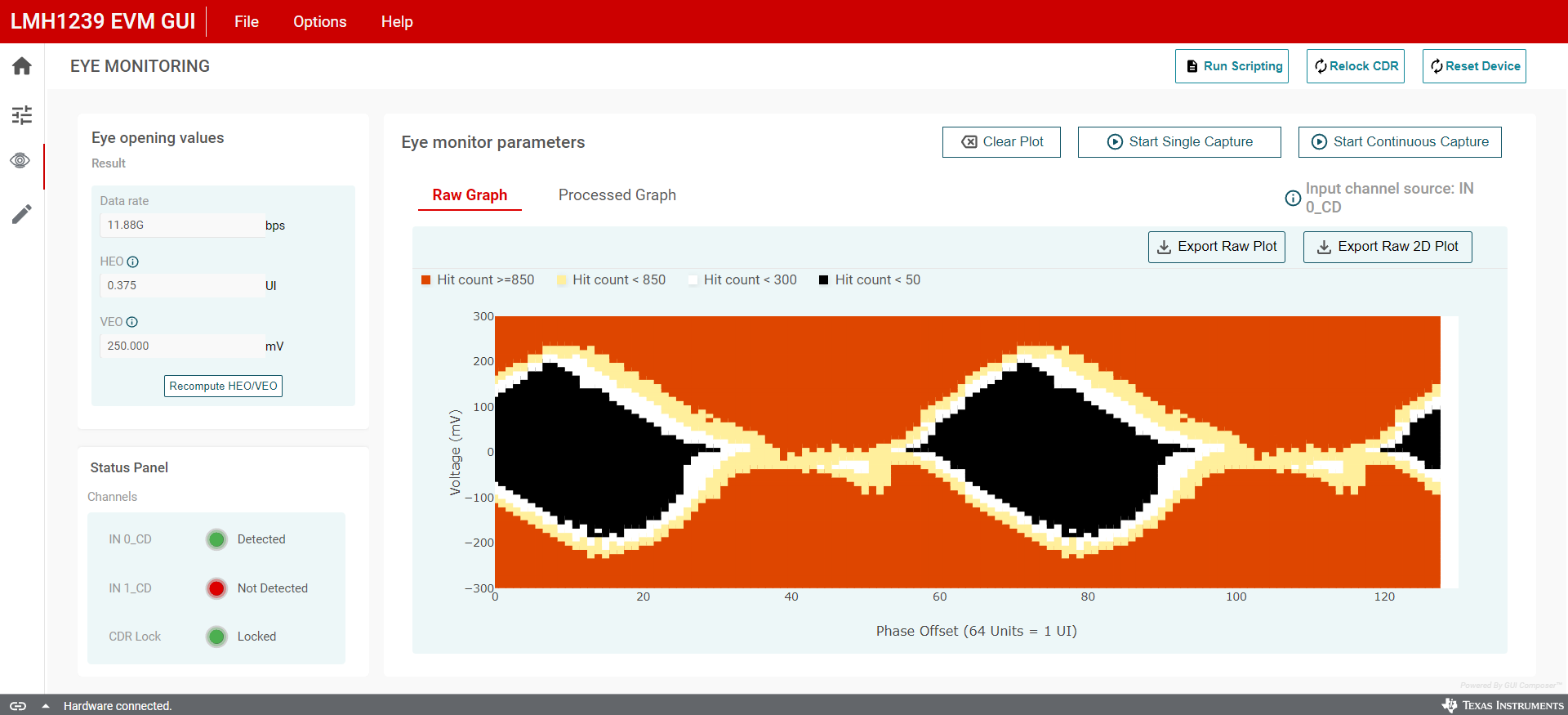SNAU303A May 2024 – September 2024
2.1.2.4 Eye Monitor for the LMH1239EVM GUI
The Eye Monitoring page for the LMH1239EVM GUI allows the user to capture the output eye. The functionality of the page can be divided into three segments, namely, the status panel, the eye opening values and the capture/plot section. The status panel is a useful indicator of the input signal location and the CDR lock status. The eye opening values section includes the detected data rate, the HEO (horizontal eye opening) in UI and the VEO (vertical eye opening) in mV. Note that it is possible to recompute the HEO/VEO and any time, and that after each single eye capture, the HEO and VEO are recalculated. Finally, there is the capture/plot section which is used to start the eye capturing process. A single capture captures a single sample of the eye whereas the continuous capture samples and plots the eye continuously.
 Figure 2-7 LMH1239EVM GUI Eye Monitoring Page
Figure 2-7 LMH1239EVM GUI Eye Monitoring Page